Learning how to sharpen a knife
diy·@quochuy·
0.000 HBDLearning how to sharpen a knife
This COVID-19 confinement time is a grea opportunity to learn new skills. This week I wanted to pickup knife sharpening. I remembered when I was a kid, my dad used to have a whetstone that has a very fine grain and I used to play with it trying to sharpen my mum's kitchen knives. Nowadays, I could not find any stones that are that fine in the local hardware store and good ones online cost a little fortune. But because I'm just starting (again), I've settled for some cheap options and here is my little sharpening tool kit:  ## A bastard file for repairs 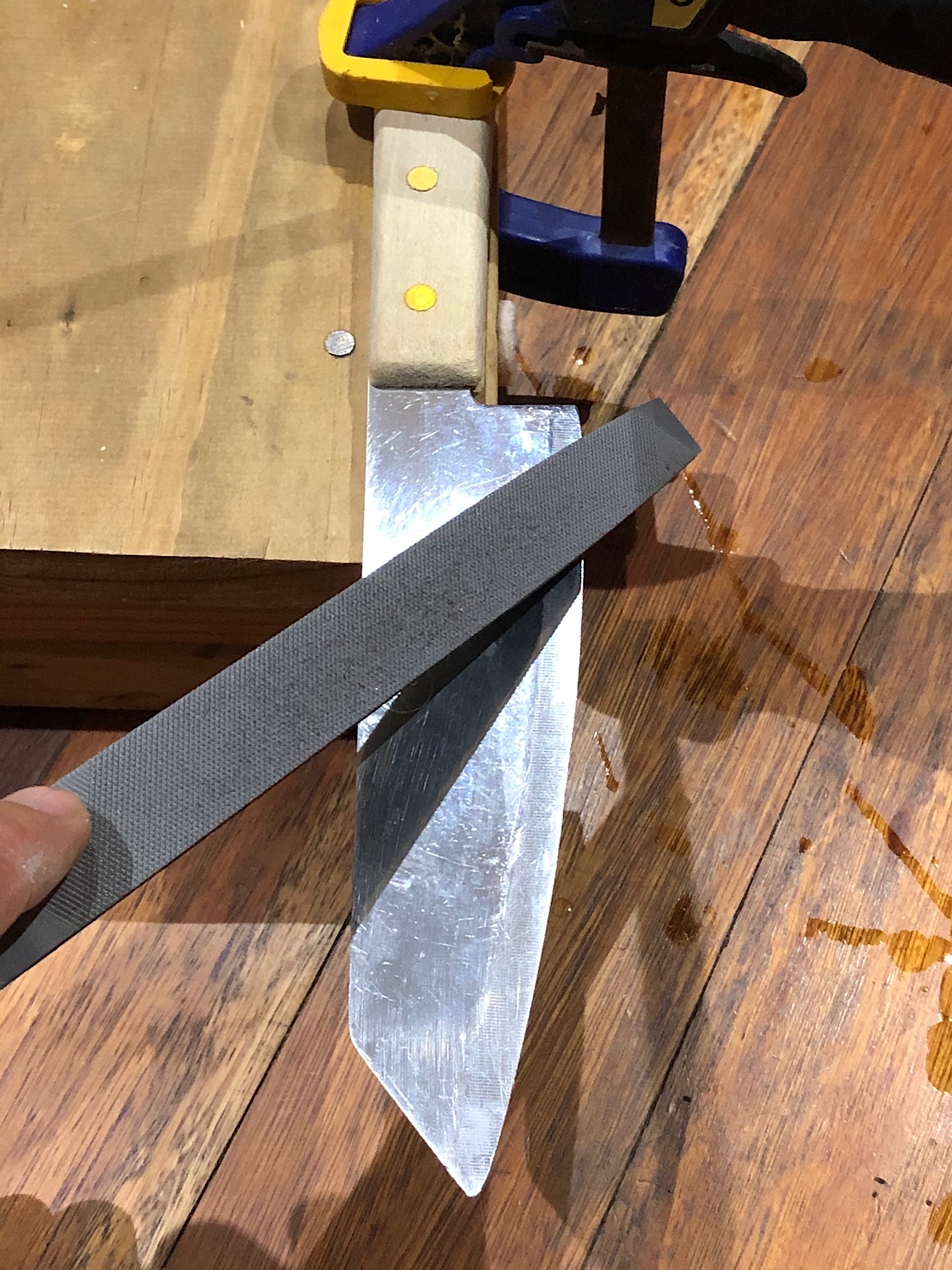 A bastard file is a file that has a coarseness in between coarse and second-cut and is ideal for removing dent and chips from the edge of a knife. How you use it is pushing the file forward against the edge of the blade at the correct angle. A file cuts in one direction so we don't pull backwards. Using a file is optional as you can use the coarse side of a sharpening stone for repair too but a file is faster and I find it useful for repairing an axe blade. ## A dual sharpening stone 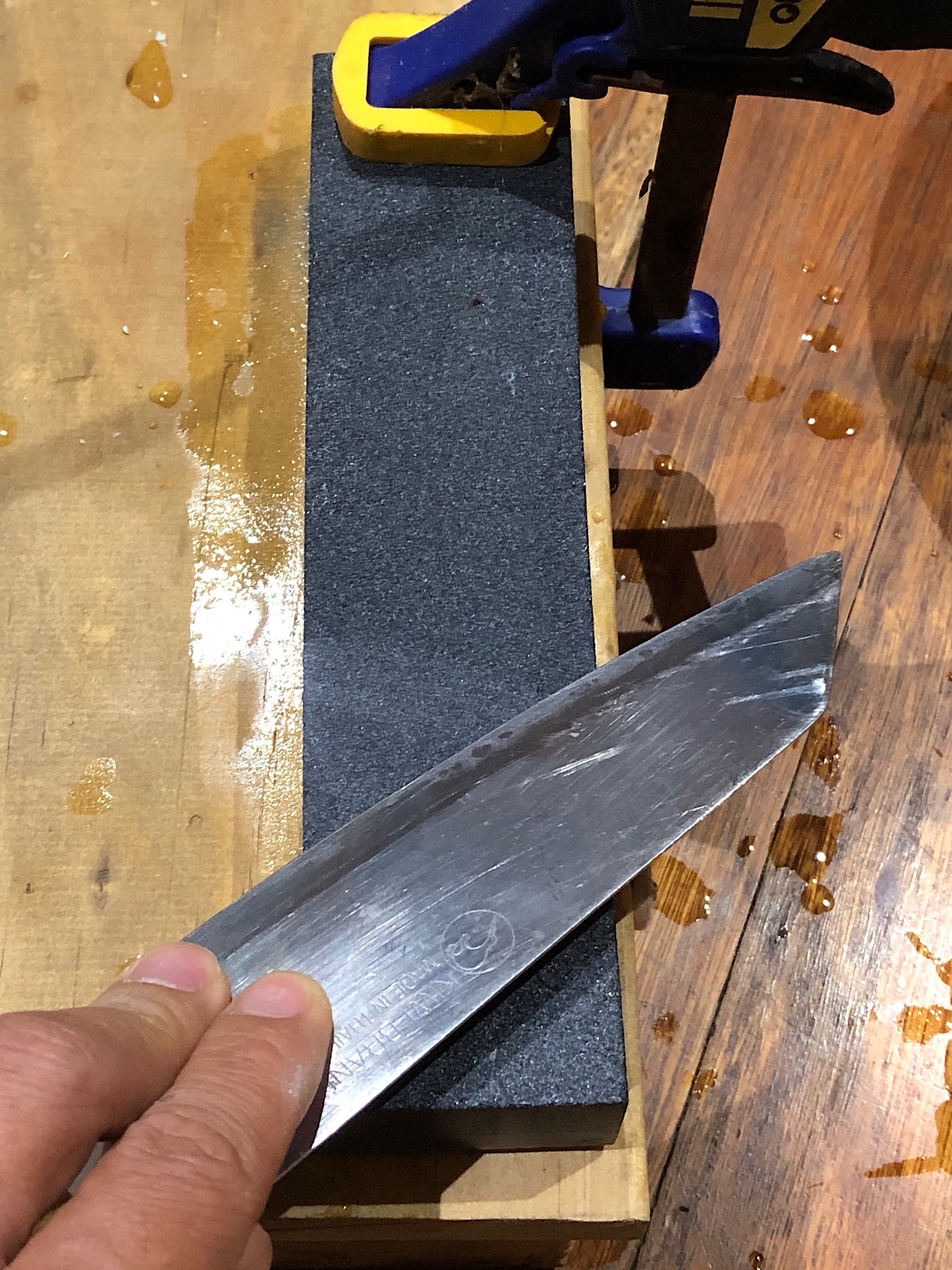 I bought a dual coarseness soaking stone. I need to soak the stone 15-20 minutes into water before use. The coarse side can be use for small repairs or cutting a profile to the edge.  For knives that are not damaged, the fine side of the stone is enough to maintain the sharpness of the edge. I would do a push and pull method ending up with stropping strokes for cleaning up the edge. ## A stropping board 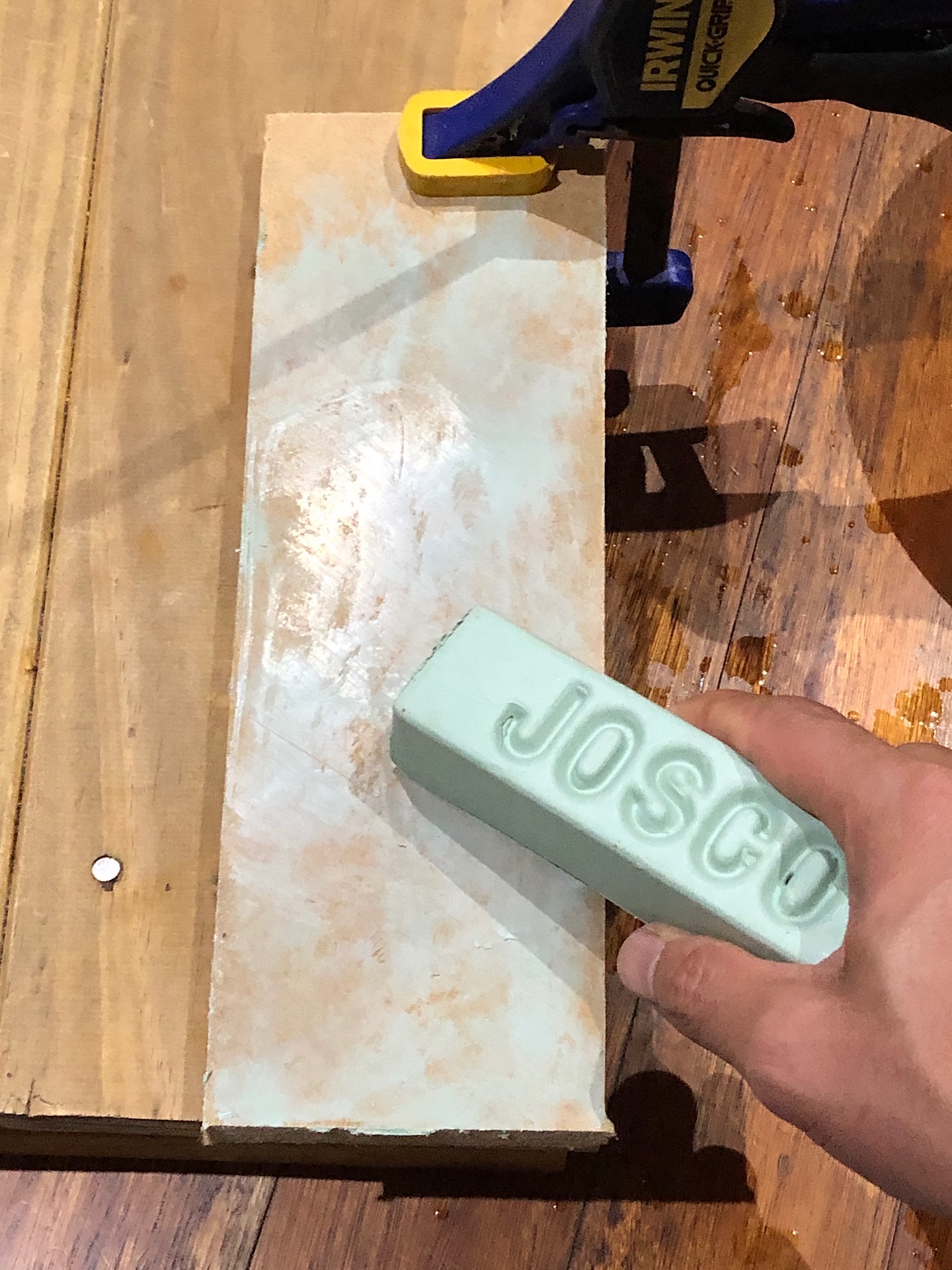 This is an optional step that is giving a finer mirror like polish to the edge. Although some people also simply use a stropping board for maintaining the sharpness of a knife without the need of a stone. Usually, people would use a piece of leather glued to a solid board for stropping knives but I heard that MDF can work better than most leather because it's flat, harder and does accept polishing compound. On the photo above, I've applied some SSX (metal) polishing compound on the MDF board. It's a kind of mix of wax and fine abrasive material. 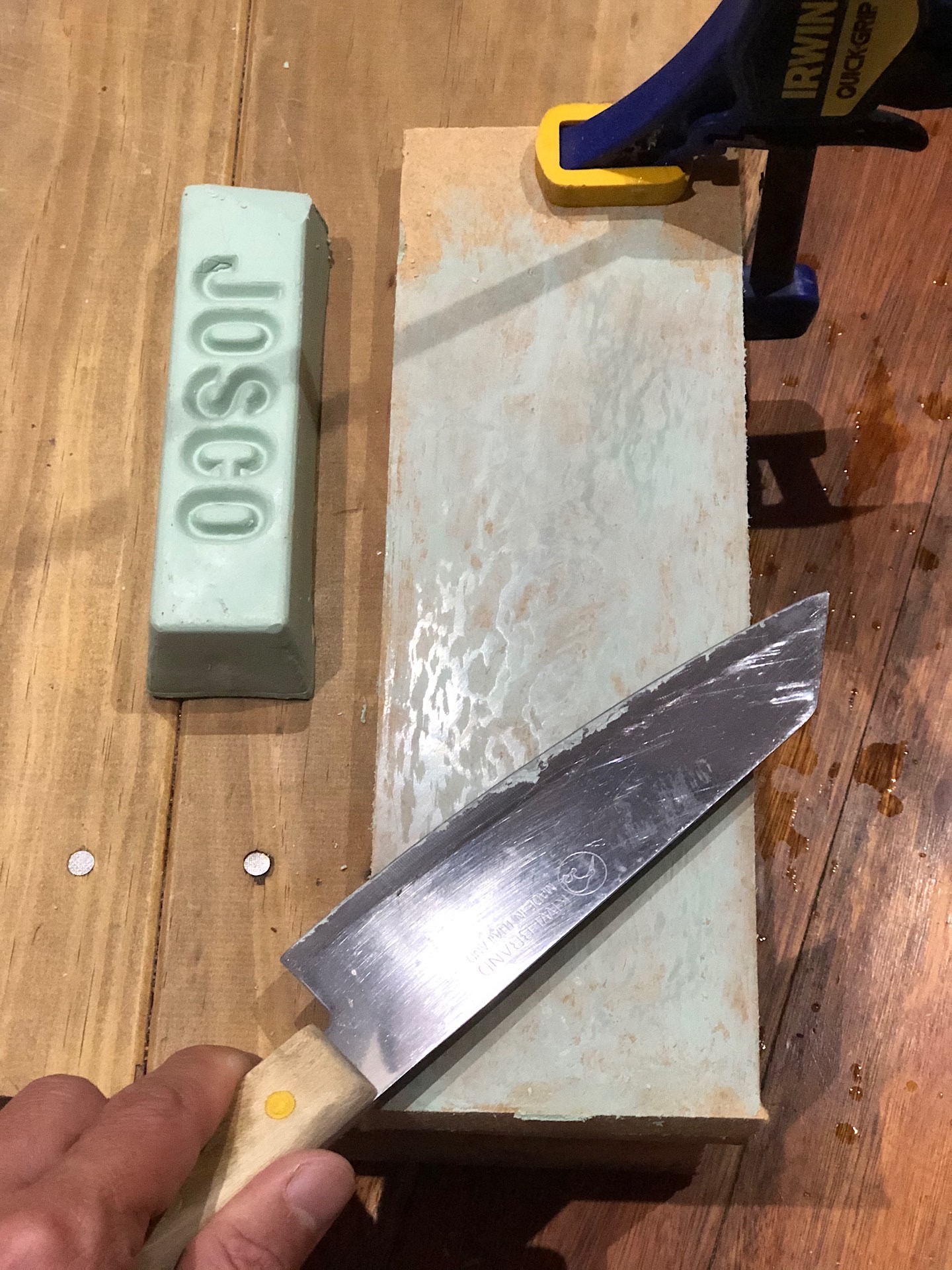 Once the MDF board is loaded with polishing compound, I would strop the knife a few times on each side for a final polish. 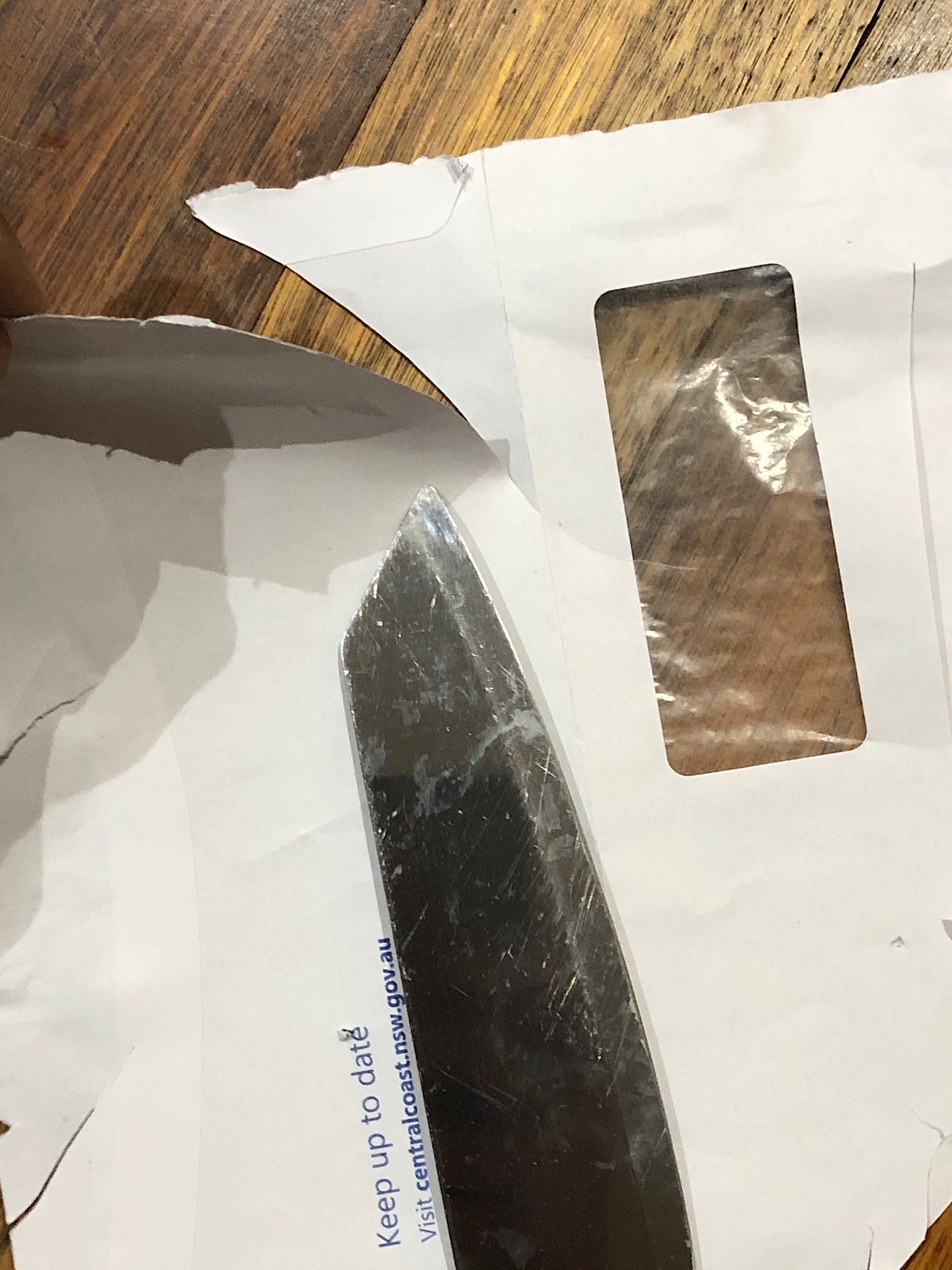 So with my tools ready, I went on Youtube and watched a lot of videos about the topic and started to try them out and I'm quite happy with this first result, the knife cut through an envelop paper like butter. I still need to practice a bit more and start dealing with my axe and hatchet. With the round pocket stone as seen below: 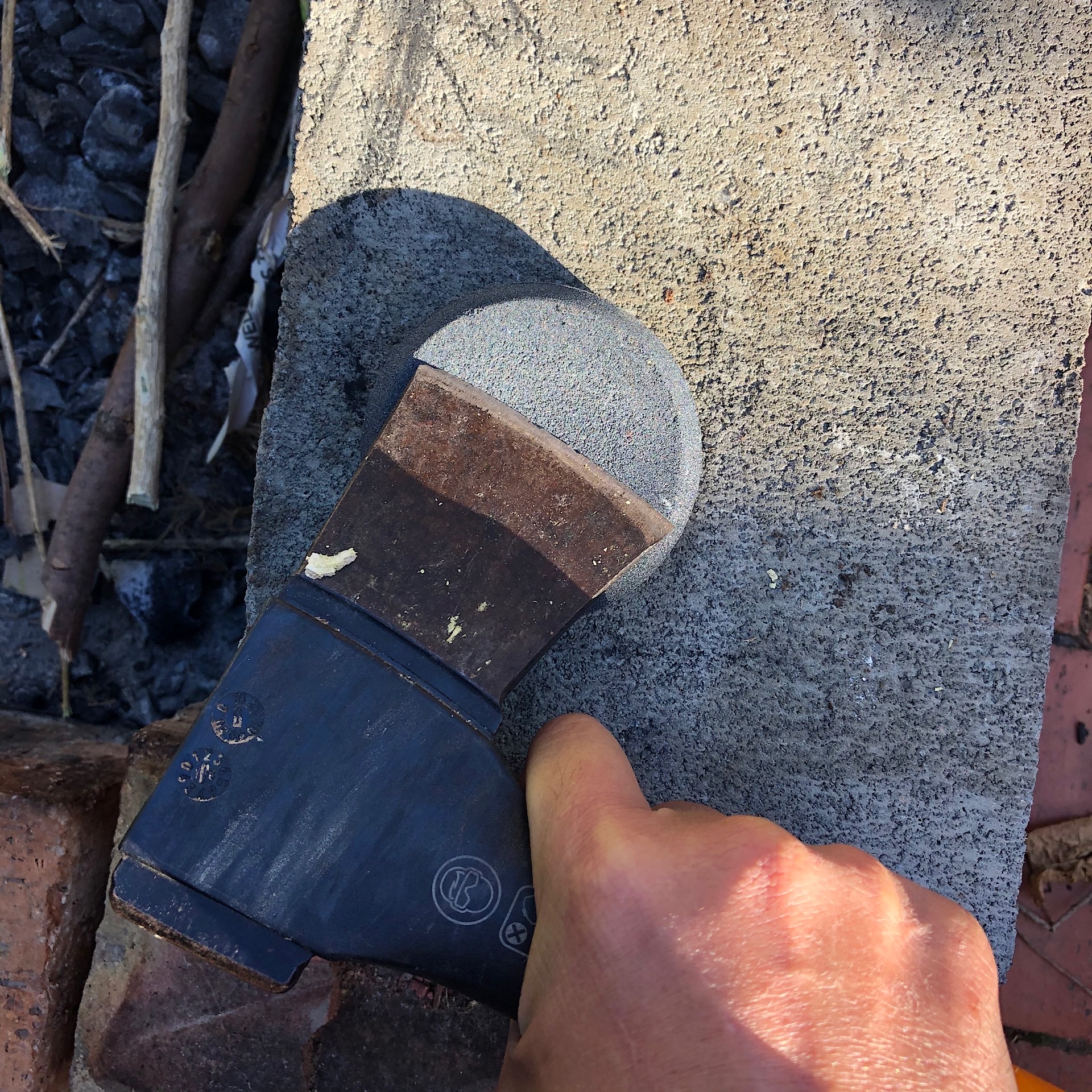 I have a Fiskars X7 hatchet and X21 axe. Both are great but the steel is not high quality and the edge regularly get chipped so I'm planning on learning how to fix and sharpen them. ## DIY pocket knife from a piece of tile My next project is to convert this little piece of rectangular tile into a pocket sharpening stone. <div class="pull-left"> 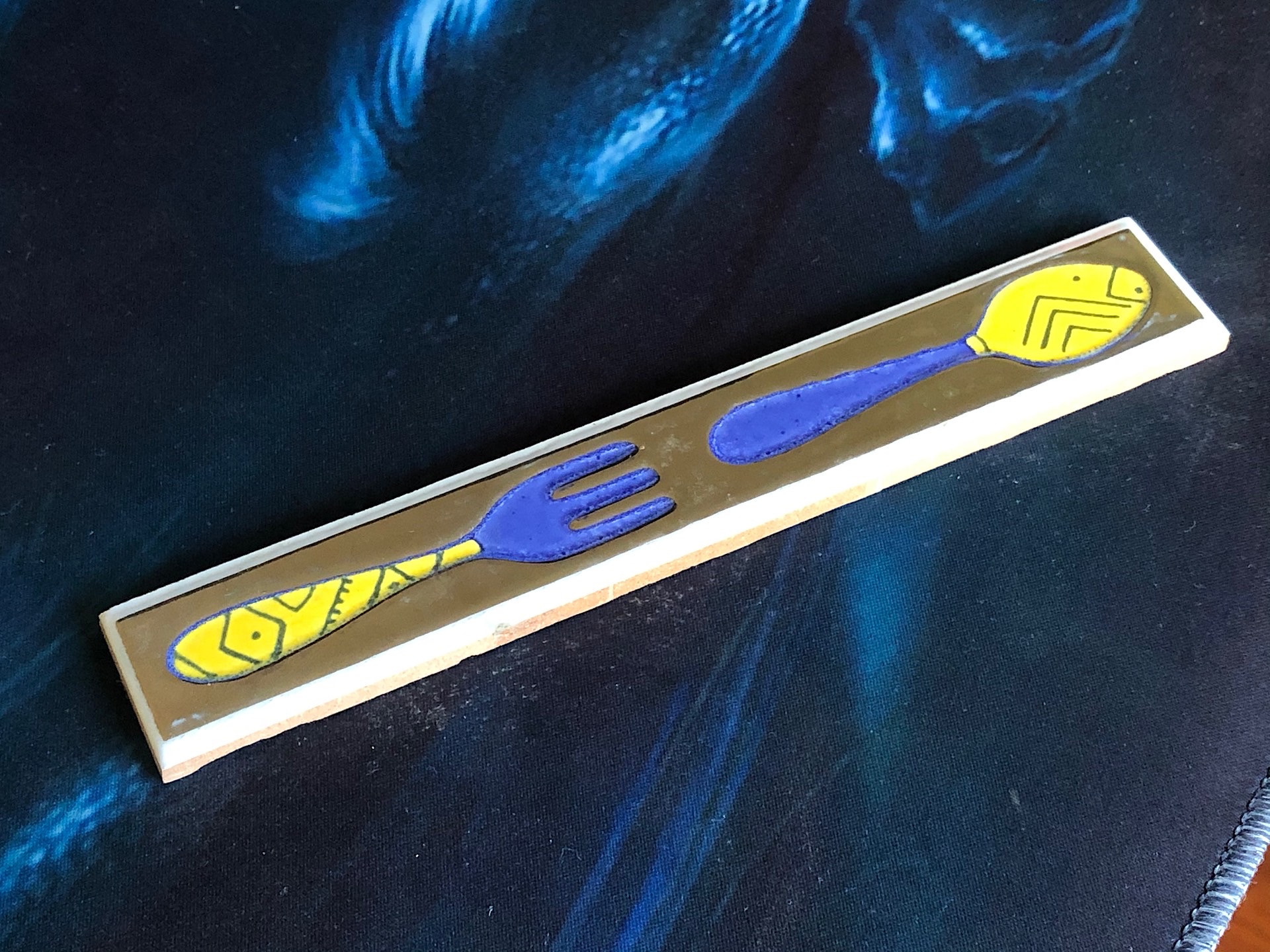 </div> <div class="pull-right">  </div> The back of the tile has a quite fine grain, feels like 1000 or 2000 grit, I'm not sure but it feels like the fine side of my sharpening stone. My plan is to flatten the back of this tile with a band sander and put it in my fishing gear bag so I can use it to sharpen my fishing knife on the go. I will document the process and do some tests later on. --- [](https://hive.blog/@teamaustralia) --- I'm also a [Hive Witness](https://hive.blog/hive-174578/@quochuy/my-personal-and-witness-introduction-to-the-hive-community), I have been helping some communities and contributing to the Condenser (the software that powers this blogging platform). Support me by [voting for my Witness](https://wallet.hive.blog/~witnesses)
👍 a-alice, takosdiary, imtase, french-tech, kriang3tee, akioexzgamer, yuza, paopaoza, ten-years-before, puza, crypto.story, univers.crypto, mintrawa, steementertainer, nalexadre, gerber, deathwing, emrebeyler, nealmcspadden, steemcityrewards, aivote, daan, shitsignals, roleerob, cadawg, bestboom, freddio, gallerani, dlike, triptolemus, bobby.madagascar, determine, permaculturedude, vxc, steem.leo, leo.voter, freddio.sport, asteroids, leo.syndication, one.life, maxuvd, dappcoder, huaren.news, goodreader, staryao, someguy123, privex, mys, rafalski, miti, pataty69, flyingbolt, upmewhale.team, whd, fbslo, upmewhale, julian2013, mosquito76, gerbo, jphamer1, accelerator, ebargains, theskmeister, sirbush, jferdous, policewala, freevoter, webdeals, rycharde, g10a, bengy, enmaart, raiseup, steemaction, morwen, maxuve, nenya, watchlist, gadrian, klima, quenty, nimloth, gadrian-sp, imbartley, galenkp, dalz, krnel, therealwolf, scrawly, revisesociology, smartsteem, hhiep, d0zer, adamada, ronaldoavelino, therising, galenkp.aus, tombstone, happy-soul, lordjames, simply-happy, kryptogames, epicdice, tinyhousecryptos, theycallmedan, netaterra, roamingsparrow, ew-and-patterns, travelgirl, therealyme, trafalgar, maxer27, kimzwarch, marlians.spt, kibela, culgin, kgsupport, artdescry, raindrop, traf, monoarc, sbi2, teamvn, bimguide, journeyofanomad, bilpcoinbpc, drew0, holger80, sharker, novacadian, scrooger, offgridlife, bozz, mrshev, steemulant, pocketjs, dein-problem, mrsbozz, steemtelly, bilpcoinrecords, priyanarc, likwid, candyboy, jk6276.life, arcange, promobot, fullnodeupdate, rasalom, a-bot, tubcat, smon-joa, debtfreein2, dollarbills, drorion, djennyfloro, putu300, jacuzzi, techcoderx, laruche, zonguin, francosteemvotes, aidefr, orlandumike, ykretz, radio-quebec, lugaxker, evildido, lpv, duke77, voltagrou, kalypso56, clement.poiret, raphaelle, steem.ens, adeljose, dragibusss, alinalazareva, rayshiuimages, skepticology, chocolatelover, gringo211985, kosimoos, twoitguys, revueh, schoolforsdg4, azizbd, womenempowerment, socialbot, dgi, homesteaderscoop, allcapsonezero, sagescrub, cryptocopy, kggymlife, bearone, teamaustralia, sultan-aceh, voter000, ancolie, dubignyp, tribevibes, kennyskitchen, alchemage, burntmd, elamental, mckeever, terrybrock, hopehuggs, misslasvegas, antimedia, vincentnijman, felander, yogacoach, ecotrain, photolander, paradigmprospect, borrowedearth, ladysalsa, riverflows, psycultureradio, dbroze, wearechange-co, careywedler, krishool, mountainjewel, bobaphet, swisswitness, porters, vibesforlife, steelborne, abundance.tribe, eco-alex, yangyanje, as31, jerrybanfield, wildhomesteading, tribesteemup, sterlinluxan, johnvibes, catherinebleish, dannyshine, tftproject, freebornangel, makinstuff, whatamidoing, activate.alpha, solarsupermama, earthmother, lishu, infinityroad, firststeps, moxieme, davinsh, hempress, homestead-guru, steemsmarter, nateonsteemit, geliquasjourney, cambridgeport90, phillyc, mowemu, fenngen, edb, allyson19, nutritree, theithei, gertu, trang, thoughts-in-time, movingman, alphaccino.art, trucklife-family, haileyscomet, sanderjansenart, taskmaster4450, gribouille, indigoocean, bobydimitrov, allyinspirit, bghandmade, squareonefarms, dinglehopper, cabalen, wargof, imcore, eaglespirit, truthabides, qwoyn, belleamie, churdtzu, eftnow, bia.birch, vegan.niinja, lartist-zen, nomad-magus, kieranpearson, sovereignalien, jocieprosza, brightstar, pogarda, senorcoconut, heart-to-heart, bewithbreath, rajib2k5, mannacurrency, colinhoward, canadianrenegade, celestialcow, inspirewithwords, deadspace, steem-net-ph, nathansenn, cristinealimasac, emaferice, zaclucasrice, abello, steem-ph, chrisrice.blog, renz.rubio, usveteran, dbuzz, nathen007, kaminchan, idiosyncratic1, gorans, agathusia, oxoskva, bue, zaibkang, pal, asgarth, duyvunguyen214, lord-geraldi, gulf41, denizcakmak, sarkash7011, miguelbaez, jamesbattler, anttn, womic, ashwim, steemik, rachman-jr25, kaku22, blockchainstudio, curationstudio, gomdory, steemfinex, hivefinex, mbbohemianstoner, finex, busy.pay, busy.org, scotauto, grider123, azirgraff, maskur2840, thepen, picciridda2, sameoldnilss, toothsome, artmom, edxserverus, proto26, cmdd, atanas007, swoof, atnep111, redanime, drag33, princessdharmy, corsica, the3metrewrap, daring-celt, lazarmarlin, superhardness, builderofcastles, d1sruptive, ttg, pouchon, irenenavarroart, judasp, blacks, prodipkumer, alaydroes83, shihabieee, lucky-guy, moniristi, hafez, monirhossen, mstaflat, robiul985340, abrockman, dw-g7vy6116744y, riskdebonair, giuatt07, jkramer, jonathancousins, honeybadger6070, goumao, wf9877, aminealaoui, hn13, tocho2, maryincryptoland, build-it, letalis-laetitia, mawit07, cellonoob, paradoxtma, colecornell, ericahan, roger5120, upvotenev, toomatoo, broncnutz, youngmusician, plmaldonado, actnearn, ryivhnn, gorc, pixietrix, shadowlioncub, diamond-head, akilie1029, fianna, sujitsawant, lacking, greatnorthcrypto, arcticgypsy, worldbuilder, garrok, pleadthefifth, chemicalhecks, samscalet, ahlawat, peeterxnjoroge, spintwister, marya77, tesmoforia, we-are-one, we-are, marymi, hive3896, elizibar, msp-foundation, msp-makeaminnow, voter007,